History of WaveRunners (PWC)
This page outlines the history of WaveRunner.

Development sprung from the challenge to create a craft that offered
"Accessible fun on the water for all"
Developing the WaveRunner: Staking everything on the future
The WaveRunner 500 (Marine Jet 500T) launched by Yamaha Motor Co., Ltd. in 1986 has come to represent the personal water craft (PWC)class, appreciated by marine fans for the easy control from a sitting position and excellent maneuverability.
The history of the aquatic motorcycle, called the PWC, is relatively long, with a vehicle that could be called the PWC point of origin shown in a French patent magazine some time around 1930. A range of aquatic vehicles were invented in the U.S. between 1954 and 1960, and in 1974 the PWC was launched on the market, but it would be some time before it was thoroughly established as a leisure vehicle.
In the late 1970s a great variety of these kinds of reduced-size small boats and motorized surfboards that had been manufactured overseas began to appear on waters in Japan. And then in 1980 the establishment of the legal framework was set in motion, albeit gradual, with promulgation of the "Special standard for aquatic motorcycles" regulating water craft.
Since then, Yamaha has been at the center of a wide range of industry efforts, supporting development of marine leisure related laws and conducting safety and educational initiatives as part of our role as a manufacturer of all things marine related. Our engineers at Yamaha played a central role in safety-related performance testing for the formulation of this "Special standard for aquatic motorcycles", and it goes without saying that the engineers became captivated by this new craft for roving freely on the water. It was then that they had a vision of designing an original PWC themselves one day. Perhaps it could even be said that this was the moment that the key concept for the WaveRunner (Marine Jet), "a craft offering safe, accessible fun on the water for all" was born.
At the time, the size of the domestic PWC market was only about 100 craft a year, and as a business opportunity it was an unknown quantity. However, the people in charge of the project convinced the company to take a chance on the future of the craft. In 1983 they received permission to develop a PWC, and began the commercialization project.

The power ski: A boat-shaped hull fitted with an engine. The key feature was quick turns enabled by ski-like agility.

Testing the tandem model prototype. Both stability and maneuverability were achieved with a shallow V-shaped , double chine hull.
From Power Ski to WaveRunner Development
While Yamaha had been steadily accumulating technological expertise in the areas of boat design and construction since 1960, the conceptual focus for the design of the WaveRunner (Marine Jet) differed to that of existing models. The method adopted for the design and manufacturing process was therefore a repetition of the following steps: prototype creation, trials and verification.
At that time, a variety of models were tested as prototypes, but it was the power ski with its outstandingly high maneuverability, that was selected for presentation in the U.S. This power ski, with its boat shaped hull, was equipped with a 25- horsepower engine manufactured by Yamaha and a 15-horsepower jet pump produced by another company. Because the power ski with its simple handlebar steering control had ski-like agility and had performed favorably in trials carried out on Lake Hamana, those involved had great expectations for it as a new-genre product.
Unfortunately however, the American test rider for the presentation was over 100 kg and 1.8 m tall, and was not even able to get on the board. Even before the performance of the power-ski had been evaluated, a large question mark had already been drawn over the marketability of a power ski designed, as it were, for a Japanese body shape.
Based on this experience, the designers threw themselves into product development with the concept of a totally new craft which could be navigated "more safely, more enjoyably, and was responsive". Development of tandem-seated types progressed having picked up the idea at the U.S. trial-ride. Demonstrated at the 2nd presentation held the following year, these models captured the hearts of the test riders.
The world's first seated tandem type was unveiled at the Chicago Boat, Sports & RV Show in 1986. This was followed by the domestic release of the MJ-500T (WaveRunner) in November of the same year, and a January 1987 unveiling of the single-seater MJ-500S (Wave Jammer), which had the same inimitable maneuverability.

Test-run of MJ-500T (foreground) and MJ-500S (background) The PWC became an overnight marine leisure trend with the event of the WaveRunner (Marine Jet) that made riding fun accessible for all.

Of the MJ-650 series released
A Craft Offering Accessible Fun on the Water for All
The WaveRunner (Marine Jet), "A craft offering accessible fun on the water for all" was a conceptual departure from existing PWCs, and one that was well received by marine fans, both in Japan and also on the world stage. The features of the MJ-500T – ease of control from a seated position and high maneuverability that enabled tandem riding – were features that were practically synonymous with the WaveRunner (Marine Jet) of the time.
The MJ-650 series that followed was developed based on these two MJ-500 models, but of this series it was the world's first three-seater model, the MJ-650TL, that gained the most popularity. This model was designed to enable three people to experience the same level of performance as a solo rider, with no loss of control characteristics, maneuverability, or exhilaration. The design concept – "A water vehicle offering light-hearted fun on the water for everyone" – provided the impetus to design the large-sized WaveRunner (Marine Jet) that captured the imagination of WaveRunner (Marine Jet) fans.
It was around this time that the WaveRunner (Marine Jet) users began to form two distinct groups: the leisure users and those with a taste for racing. The model base as we know it took shape at this point, with a line-up of performance models, such as TZ and GP aimed at the racing group, and luxury models such as the VN and XL for those who wanted to get the most out of their leisure hours.
The size of the market has increased hand-in-hand with the enrichment of the domestic market lineup, and Yamaha have come up with a variety of initiatives to increase public awareness about Marine Jets and the different ways of enjoying the water. These include the establishment of the "Marine Jet Club" for Marine Jet owners and the "Marine Jet Jamboree" events held for their benefit, and active involvement in safety education activities through the establishment of the PWC Safety Association.
An important turning point in the up-sizing of the Marine Jet was the shift from a 2-stroke to a 4-stroke engine from 1995. In May 2002 Yamaha launched the world's first low-emission PWC featuring a 4-stroke engine: the FX-140. The FX-140 was followed by 4-stroke updates of not only the WaveRunner (Marine Jet), but also the entire PWC range; 5 years later, in 2009, domestic runabout models all featured 4-stroke engines.
Almost a quarter of a century on from the first prototype, the WaveRunner (Marine Jet) has come to represent PWC craft. The potential for fun and enjoyment can only increase as the WaveRunner develops in new directions, building on the concept of "A craft offering accessible fun on the water for all"
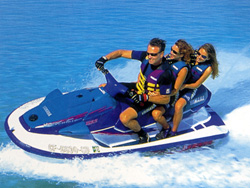
The GP1200 proved overwhelmingly popular as a runabout model that crossed over the racing and leisure genres. The updated GP1200R and GP1300R models have been refreshed with new technology such as Y.P.P.S. and Y.S.S.S. designed to reduce the environmental impact.
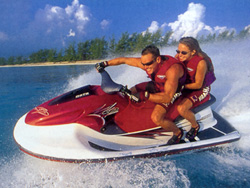
With the release of the MJ-1100VN, the three-seater model in 1996, a great advance was made in the up-sizing of the WaveRunner (Marine Jet)
1986

WaveRunner 500 (Marine Jet 500T)
Yamaha released the WaveRunner 500 (Marine Jet 500T), the world's first sit-down type open stern production PWC. This is the model that created today's PWC market. As an agile craft that many people could enjoy with a sense of assurance, it sent shockwaves through the small watercraft industry.
1987
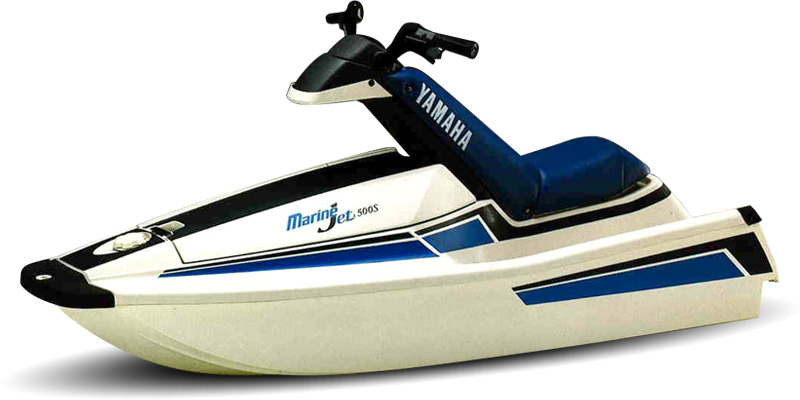
WaveJammer 500 (Marine Jet 500S)
The WaveJammer 500 (Marine Jet 500S) debuted as the world’s first sit-down type solo riding PWC. The combination of a fixed steering column and small hull made this an extremely agile model. Its concept would later be carried on by the WaveBlaster models.
1990

WaveRunner III 650 (Marine Jet 650TL)
The WaveRunner III 650 (Marine Jet 650TL) was released as the world’s first 3-passenger PWC, featuring a larger hull and high-performance engine. With truly pleasurable running performance and great stability, it started a new rage and became the predecessor of the later family models. It became a standard that is still seen on the water today. Its reverse drive was also a first.
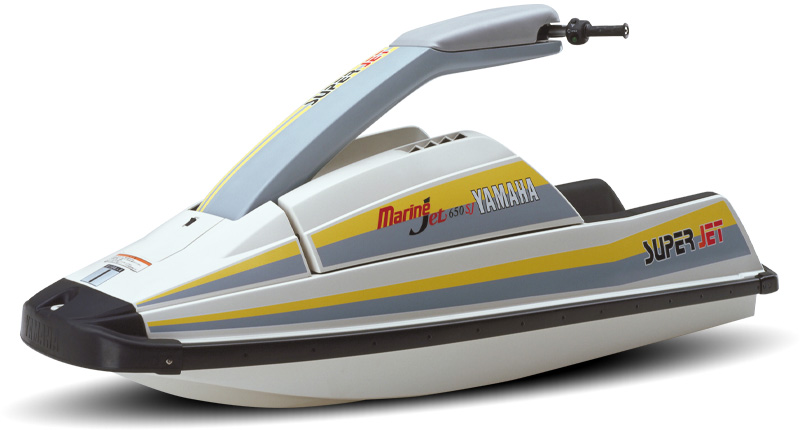
Super Jet 650
With the SuperJet 650, Yamaha made itself a presence in the stand-up model category.
The great balance of this model quickly spread the Super Jet name around the world, making the stand-up models accessible to more people.
1992
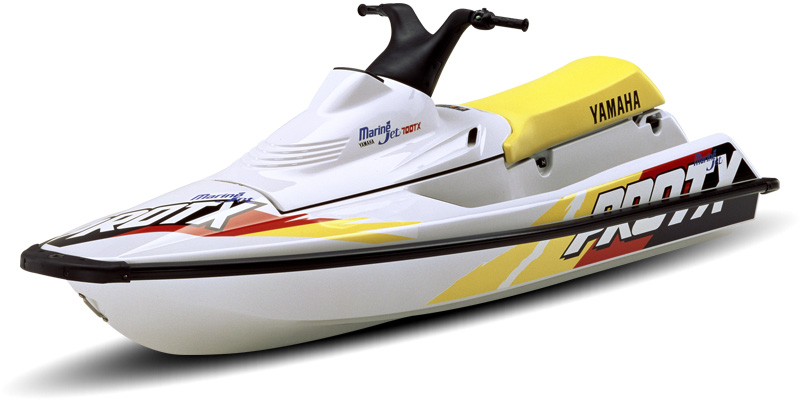
WaveRunner VXR650 (Marine Jet 650TX)
The WaveRunner VXR650 (Marine Jet 650TX) was released as the deluxe model of Yamaha's tandem series. While the same size as the initial WaveRunners, the adoption of a new concave hull design gave it sharper turning with reduced slipping.
1993
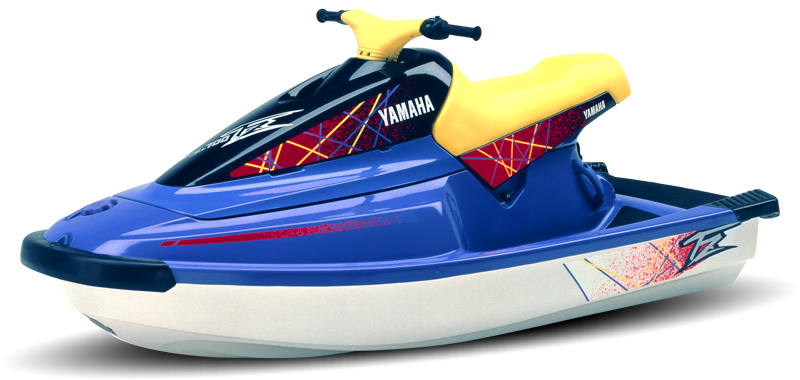
WaveBlaster 700 (Marine Jet 700TZ)
The WaveBlaster 700 (Marine Jet 700TZ) made its debut. With a motorcycle-like ride that let riders enjoy sharply banked turns, combined with its powerful engine, this model won the hearts of sports-minded riders. At the races it dominated the sport class competition. This is a model that still has many devoted fans today.
1994
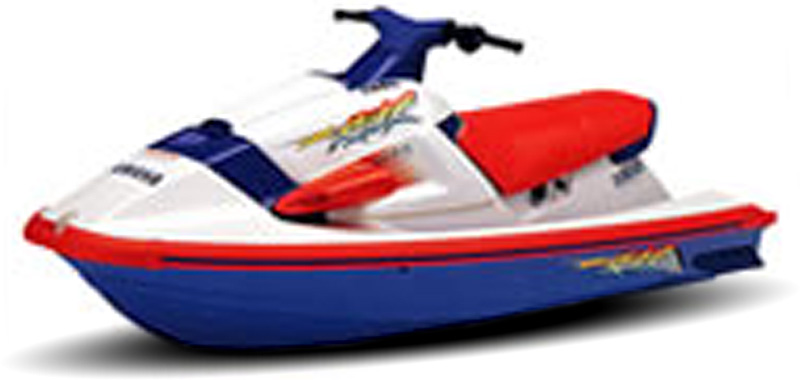
WaveRaider 700 (Marine Jet 700RA)
The WaveRaider 700 (Marine Jet 700RA) was released. PWCs entered a new era of speed racing, and runabout type models with "V" hulls became the standard.
In the same year, Yamaha also released the FX1 stand-up model.
1995
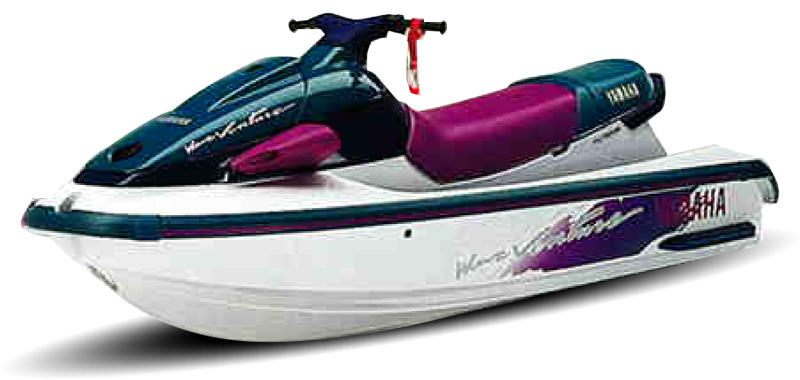
WaveVenture 700 (Marine Jet 700VN)
The full-sized 3-seater model WaveVenture 700 (Marine Jet 700VN) debuted. Because this was a model that beginners could ride with assurance even in fairly rough waters, it became a hit at beaches with PWC rentals. This year the WaveRaider was also upgraded with a 1100cc engine for the increasingly high-speed PWC scene.
1996
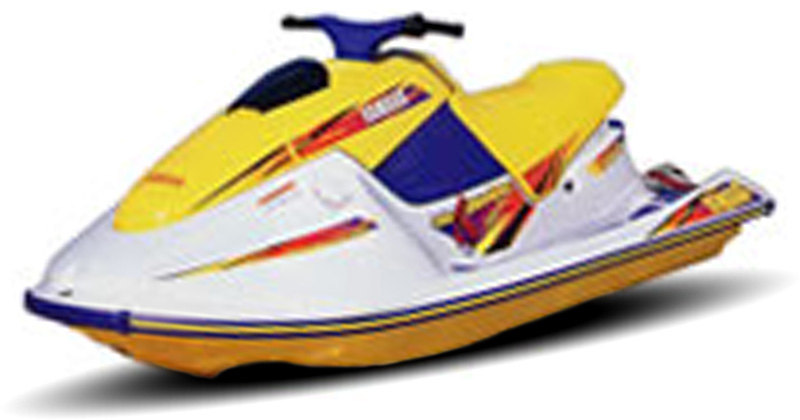
WaveBlaster II
To help more people enjoy the fun of riding a PWC aggressively, the WaveBlaster II was released with a powerful 760cc engine and a hull designed for even greater stability.
The SuperJet was also upgraded with a 700cc engine.
1997
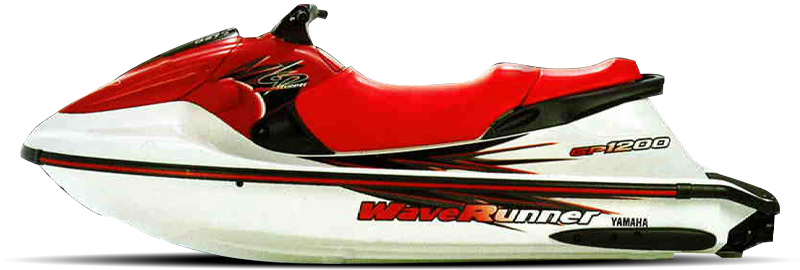
WaveRunner GP 1200
The GP1200 was released as a runabout model with awesome performance. With the most powerful engine in the industry and a compact body designed for great agility, this model stole the hearts of riders who loved real speed riding.
1998
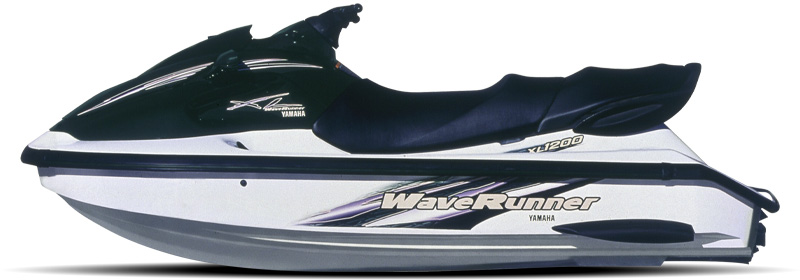
WaveRunner XL 1200
The XL1200 debuted as Yamaha’s top model in the full-sized 3-seater category. It won popularity for its unbeatable combination of a powerful engine, a hull that delivered both great running performance and stability and contemporary styling. This model expanded the world of PWC sports to include touring, towing sports and family riding.
1999
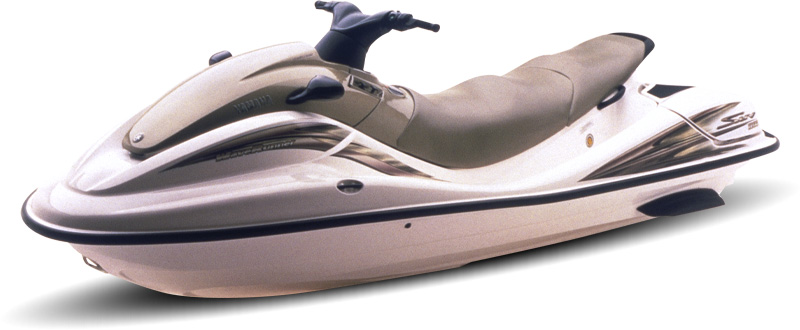
WaveRunner SUV 1200

WaveRunner XL 1200 Ltd.
The SUV1200 debuted as the world’s first 4-passenger PWC. With stability like no PWC before it and handling freedom that belied its size, this model became an industry legend. It further expanded the world of PWC enjoyment to long-distance touring.
This same year, Yamaha also introduced the XL1200 Ltd. powered by the industry’s highest horsepower engine at 155 hp.
2000

WaveRunner GP 1200R
The GP1200R debuted with a 155 hp engine and newly designed hull and body. Its unsurpassed running performance and gorgeous design won it the crown as leader of the muscle craft. It quickly became the must-have machine for the performance-oriented rider.
2001
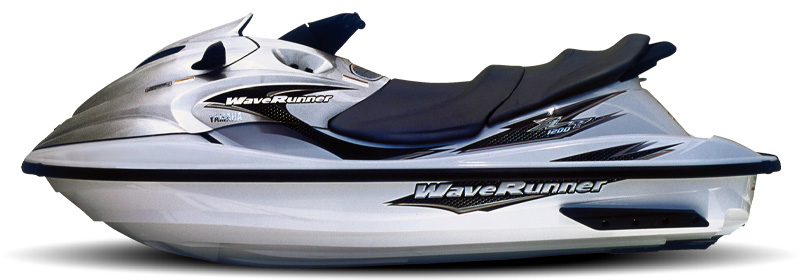
WaveRunner XLT 1200
The XLT1200 debuted as a re-designed version of the XL1200 Ltd. with a completely new front look. This was a model that made many performance-minded customers look to the 3-seater category for the first time.
2002
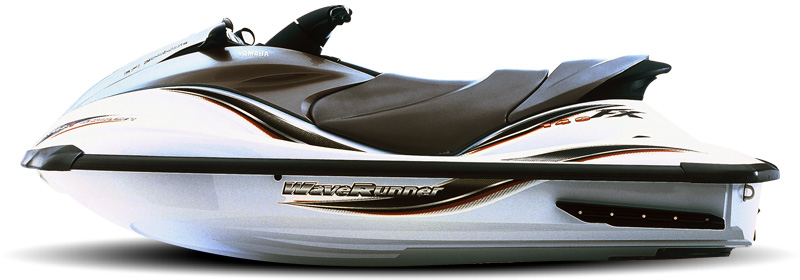
WaveRunner FX140
The FX140 was released as the world’s first 4-stroke engine PWC. Its smooth engine feeling, clean exhaust and great fuel economy revolutionized the world of PWCs. It also became popular for its new hull design that provides good stability even on rougher waters.
2003

WaveRunner GP 1300R
Raising the displacement of the highly-acclaimed 1200cc engine and adding fuel injection and a high-performance catalytic converter, Yamaha introduced the GP1300R as a revolutionary muscle craft that offered both performance and environmental friendliness. This model made Yamaha the leader in environment-friendly models in both 2- and 4-stroke PWCs.An FX Cruiser version of the FX140 with hip-support seats was also introduced.
2004
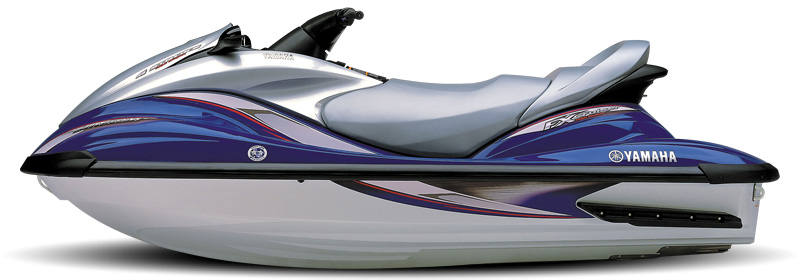
WaveRunner FX Cruiser High Output
The FX High Output and FX Cruiser High Output appeared with higher performance 4-stroke engines. With these models the much talked about 4-stroke models entered the high-performance arena. Yamaha 4-stroke models are now praised throughout the industry for their smooth-running engines, great reliability and outstanding hull performance.
2005
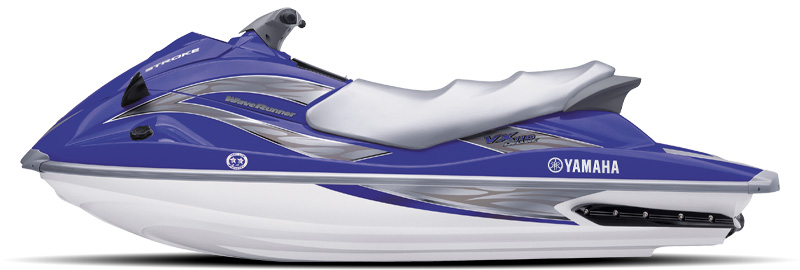
WaveRunner VX Deluxe
The VX Sport and VX Deluxe are released with the aim of getting more customers to experience the wonderful performance of 4-stroke engine models by offering an irresistible combination of high quality and an affordable price. The engine is a masterpiece of engineering based on the proven high-performance 4-cylinder engine used on the FX High Output models. Combined with a new-design hull, this model opens new horizons for the PWC.
2006
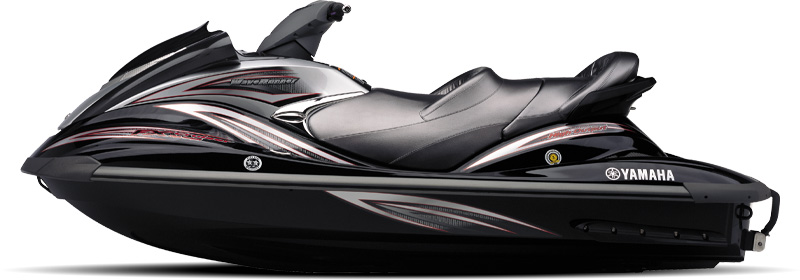
WaveRunner FX Cruiser High Output

WaveRunner VX 700
The flagship model FX Cruiser High Output appears with improvements that further heighten its unique cruiser concept and a boldly impressive new colored hull. A number of new features like the sporty analog meter panel accentuate the new world of cruising pleasure this model offers the rider.
Also, as the successor to the popular XL700 that has been the craft of choice at PWC rental operations around the world, Yamaha presents the new model VX700. Mounting the proven, highly durable Yamaha 700 cc 2-stroke engine on VX hull, known for its exciting handling, this model sets a new standard in the entry-level model category.
2007
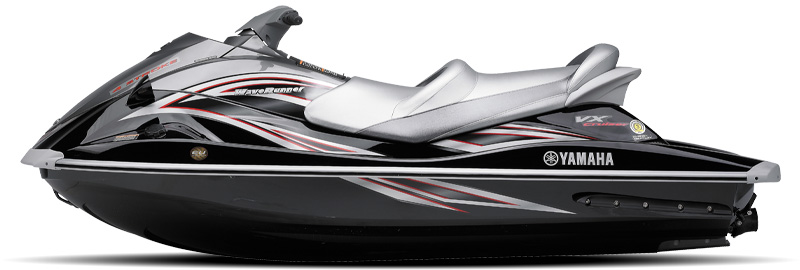
WaveRunner VX Cruiser
To the worldwide best-selling VX series we add the new model VX Cruiser with a newly developed "Cruiser Seat." The excellent sense of fit that the riding position of the seat provides makes it possible to experience the fine handling performance of the VX hull even more fully.
2008
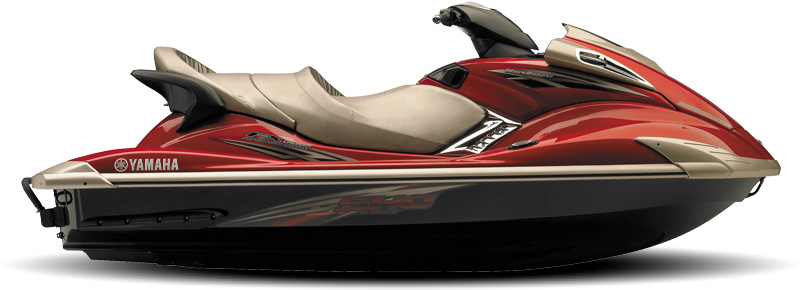
WaveRunner FX Cruiser SHO

WaveRunner SuperJet
Yamaha's flagship combines a 1.8 liter supercharged engine that is compact and yet the largest in the industry with a NanoXcel SMC body that is 25% lighter than earlier SMC hulls to carve out a new age of WaveRunner. It is loaded with electronic control functions such as cruise assist to aggressively add extra value as a cruiser model.
The SuperJet reigns as the byword for stand-up models. Yamaha has added a brand new hull with one aim—to give you the potential to win. This new high-performance hull reflects the ideal shape that top riders desire for sharp turns and neutral handling.
2009

WaveRunner FZR
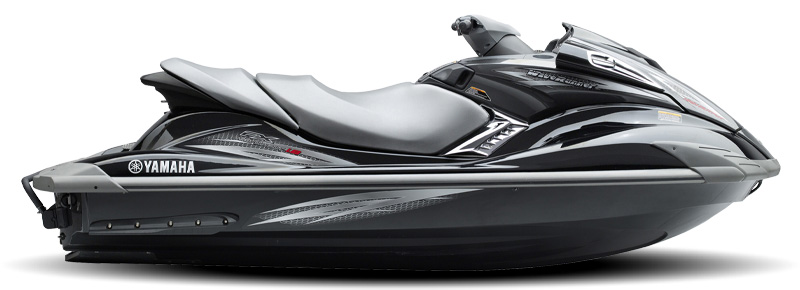
WaveRunner FX High Output
Yamaha invented the light, smooth-turning hull for the pursuit of sports riding. We coupled it with a 1.8 liter Supercharged engine to increase the excitement of riders on the water. Then we took stand-up riding position concepts and added revolutionary telescopic steering.
This model has a 1.8 liter Naturally Aspirated Engine. The large engine displacement creates superb high performance output with unmatched acceleration. At the same time, it achieves remarkable environmental performance with clean emission and low fuel-consumption. The FX High Output points the way to the future of PWCs.
2010
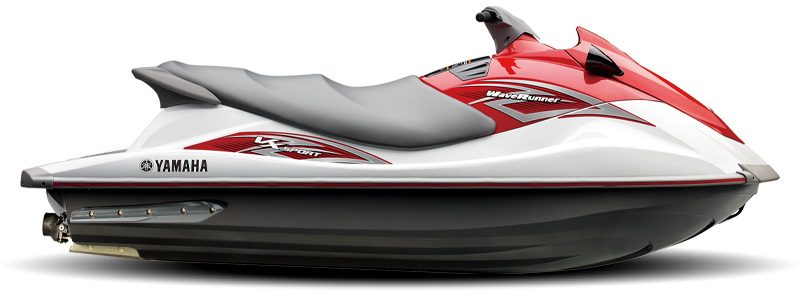
WaveRunner VX Sport
The world's best-selling PWC since their debut in 2005, VX Series has been renewed for 2010. Yamaha has kept the industry's best fuel efficiency and the quality, and upgraded its premium look with newly designed deck and black hull. The VX Sport is the best machine to simply enjoy riding with excellent cost performance.
2011
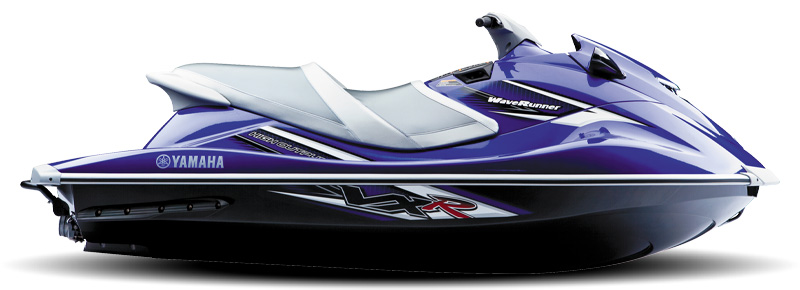
WaveRunner VXR
The VXR was first released using a VX hull which utilized the ultra lightweight material "NanoXcel" and was powered by a 1.8L High Output Engine. Out of all existing runabout models, the VXR laid claim to the lightest body in the industry.
This new package refines the speed and agility of the model even further. With the new VXR, riders are reminded of the true nature of sports riding.
2012

WaveRunner FX Cruiser SHO
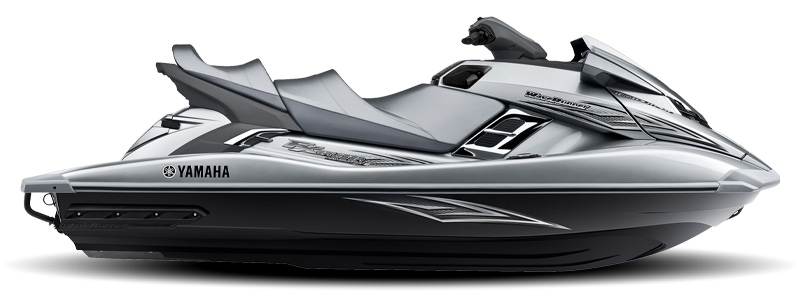
WaveRunner FX Cruiser HO
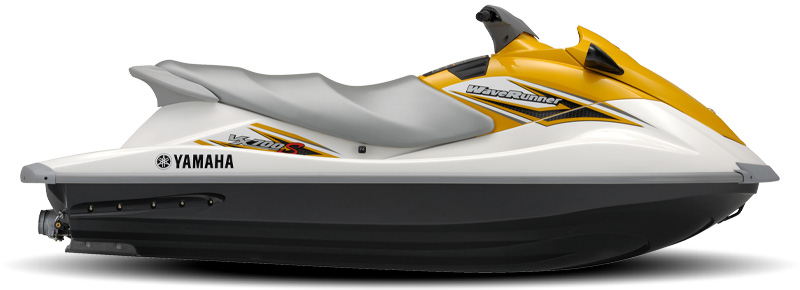
WaveRunner VX700S
The FX Cruiser SHO and FX Cruiser HO now come with an all-new body lineup. The remarkably lightweight and longer NanoXcel hull offers better handling and is able to deliver the most stable ride so far, while the instantly activated mechanical neutral enables the craft to start in place and move easily around built up areas. The craft’s Theater-Style Cruiser Seat is an invitation to a flawless 3 – passenger luxury riding experience.
The industry’s only 2 stroke runabout model with its 701cc engine is now the VX700S, with a VAR-MAX body. This significantly lighter body with revised weight balance has also achieved further improvements in agility, turning and acceleration performance.
2014
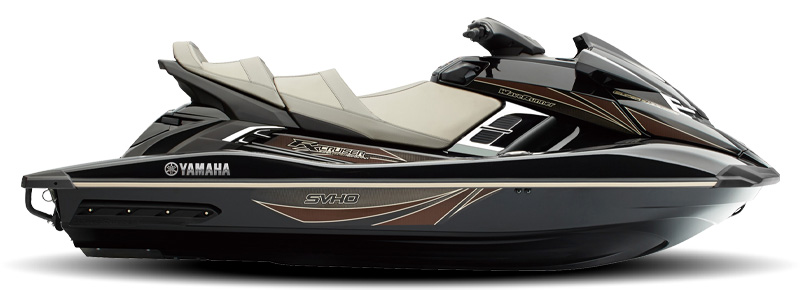
WaveRunner FX Cruiser SVHO
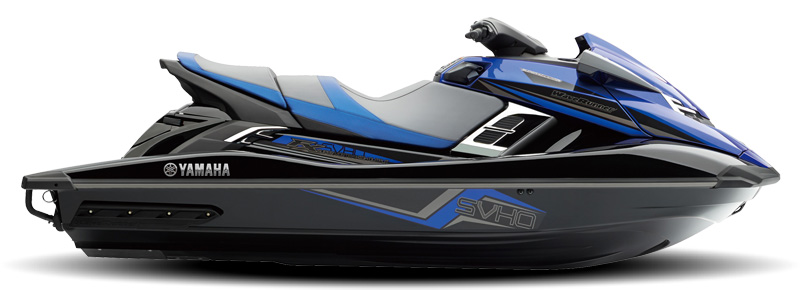
WaveRunner FX SVHO

WaveRunner FZS SVHO
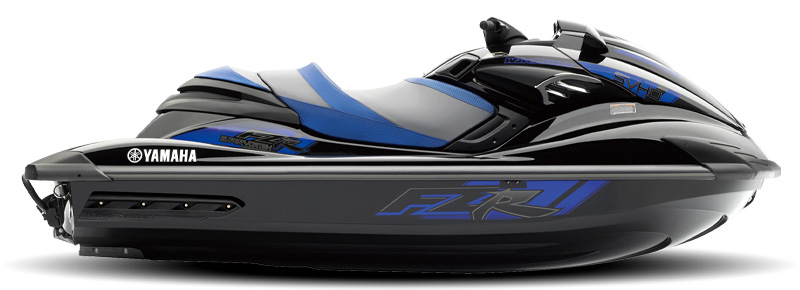
WaveRunner FZR SVHO
YAMAHA SVHO ENGINE
New for select Yamaha WaveRunners in 2014 is the race-ready Super Vortex High Output marine engine - the most technically-advanced motor ever designed for personal watercraft use and the most powerful engine ever in a Yamaha WaverRunner. The Yamaha Super Vortex High Output (SVHO) engine is a purpose-built 1.8L, four-stroke, four-cylinder supercharged and intercooled motor that advances the performance gains made possible by its predecessor, the Yamaha Super High Output (SHO) engine.
The FX series featuring this SVHO engine has succeeded in delivering a comfortable riding experience and premium feel thanks to its plentiful reserves of power. The FZ series provides thrills and Kando beyond the ordinary through its dominating acceleration and sharp turning ability.
2015
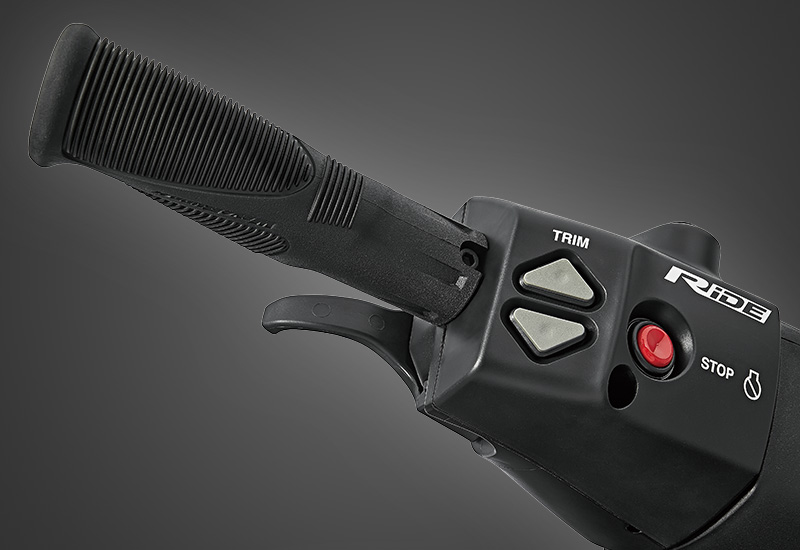
RiDE
RiDE is the World’s First Handlebars with Dual Throttle Controls, an ultra-intuitive control system. Pull the right hand throttle lever to go forward, pull the left hand throttle lever to slow down and go in reverse. Let go of both levers and the watercraft is in neutral. The right and left throttle levers can work together at speed to let the driver dial in maximum control over their ride.
RiDE utilizes a patented bucket design that forces water out the sides of the bucket, whereby acting as a virtual rudder that keeps the watercraft tracking in the direction the driver intended.
The throttle system is controlled by a Boat Control Unit, or BCU, that is specifically tuned at the factory to account for the power and weight of each model. This ensures a completely smooth experience whether riding around a dock in close quarters or taking a turn at full speed. The BCU is also programmed to understand driver input and intention when both levers are pulled simultaneously, applying the appropriate level of acceleration or deceleration to maximize control.

NanoXcel2
For 2015, Yamaha introduces NanoXcel 2, a nanotechnology-engineered material that is even lighter than the previous version while maintaining the structural integrity the material has come to be recognized for.
To create NanoXcel 2, Yamaha engineers innovated at the microscopic level using a combination of “nano” clay and glass micro-bubbles to develop a new stronger resin that uses less material. The glass micro-bubbles used in NanoXcel 2 are smaller and stronger than other filler materials, contributing to the strength, rigidity and lightweight of the new hulls and decks.
2016
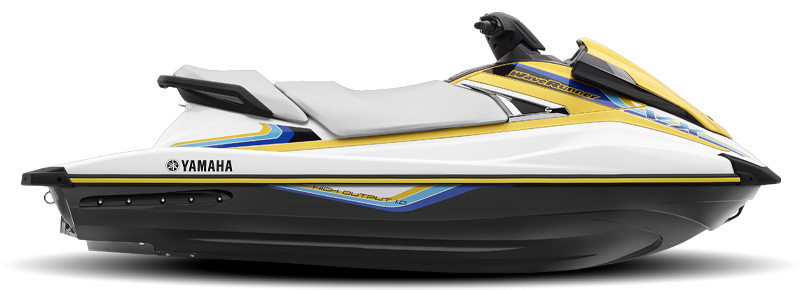
WaveRunner VX
All the styling of more expensive watercraft makes the VX one of the best-looking personal watercraft in its class. Features Yamaha's innovative TR-1 High Output 3-cylinder Marine engine and RiDE for a value-packed ownership experience.
2017
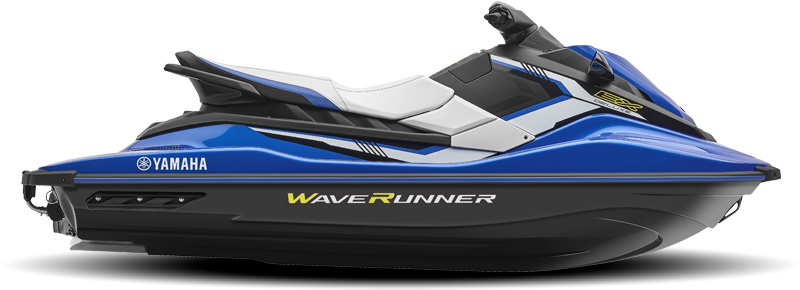
WaveRunner EX Deluxe
The EX Series is designed for buyers seeking an affordable entry into the sport of personal watercraft, but demand the durability, reliability and quality that only Yamaha can deliver.
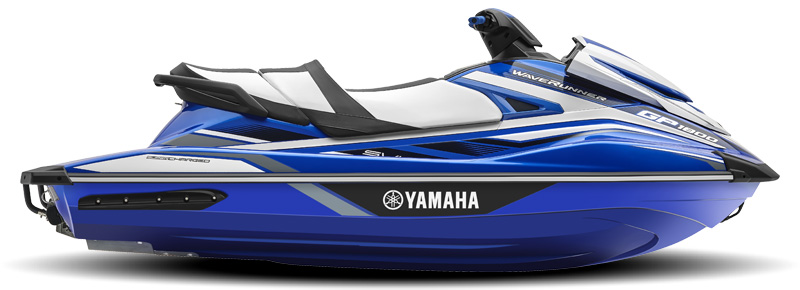
WaveRunner GP1800
Born out of Yamaha’s deep race heritage, and designed for closed-course racing and experienced high-performance enthusiasts, the new GP1800 is the quickest, fastest, most precise handling WaveRunner that Yamaha has ever designed.
2019
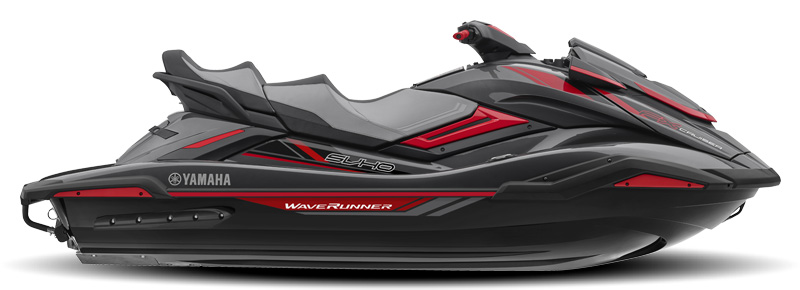
WaveRunner FX Cruiser SVHO
The luxury performance personal watercraft series returns with an all-new deck and hull design, the industry’s first color touchscreen instrumentation, self-draining footwells, and an innovative multi-mount system that makes affixing accessories to the FX a snap.
The new deck of the FX Series is aggressive and bold, featuring stylish gunwales and an entire look that is supercar-sleek. The new hull design favors stability, predictability, and comfort in choppy water conditions.
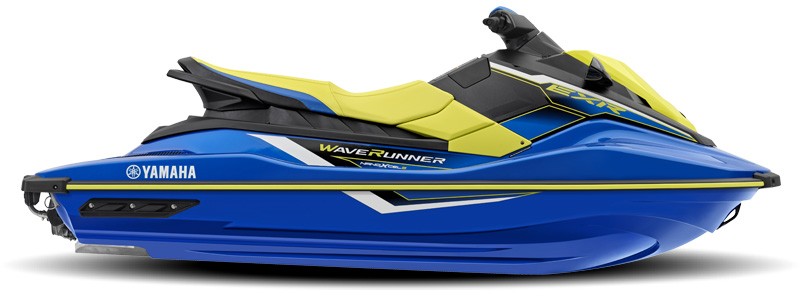
WaveRunner EXR
The high-performance EXR is the most powerful and lightweight Rec Lite watercraft in 2019. Powering the EXR is three-cylinder TR-1 HO marine engine that comes with a modified engine control unit (ECU) that increases horsepower by ten percent compared to the rest of the EX line.
The EXR features Yamaha’s high-performance, super-lightweight NanoXcel 2 hull and deck material, and also features a top-loader intake grate and a 40mm pump extension for more agile handling and performance.
2021
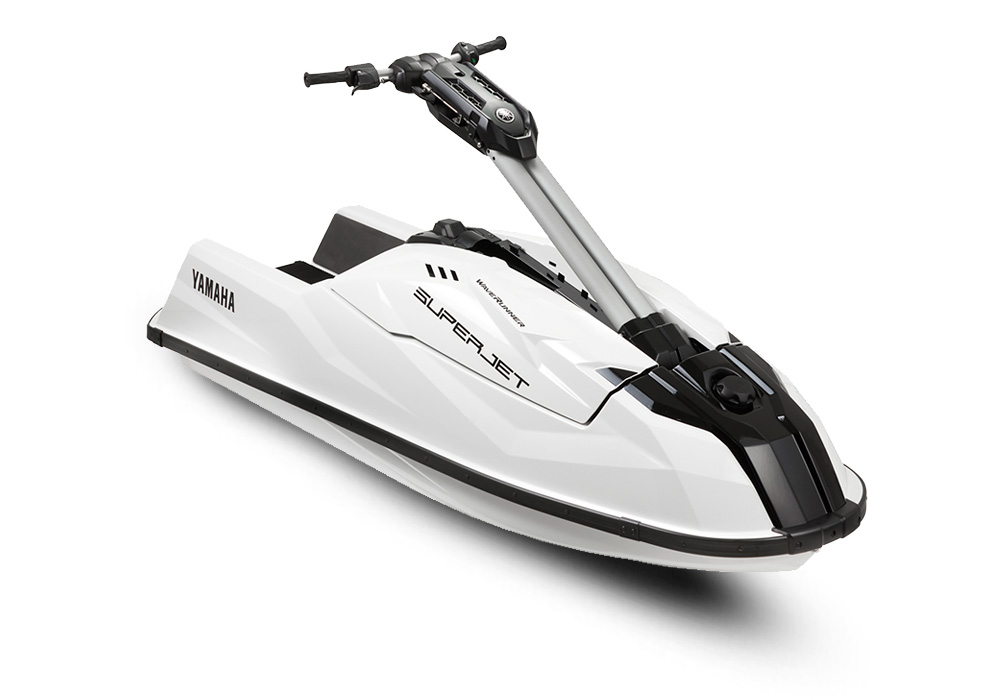
WaveRunner SuperJet
The SuperJet returns all-new from the ground up to challenge a new generation of standup riders with a torquey Yamaha’s award-winning, three-cylinder, four-stroke TR-1 marine engine. This compact, lightweight 1,049cc engine delivers the exhilarating acceleration that standup riders love throughout engine RPM range. And for novice riders, there is now a L-MODE that reduces engine performance of the SuperJet to 85 percent or approximately 40 miles per hour.
The design goal for Yamaha engineers was to keep the original SuperJet riding experience alive in a new four-stroke model. To do that, Yamaha needed to keep the size and weight of the new standup as close to its two-stroke predecessor as possible.
The new deck features a three-position adjustable handle pole that can extend up to 50mm in length, race-inspired handlebars, and a wide padded foot tray with an integrated reboarding holder.
Under the waterline, the new SuperJet hull is designed for greater static and dynamic stability while maintaining the SuperJet’s thrilling turning abilities.
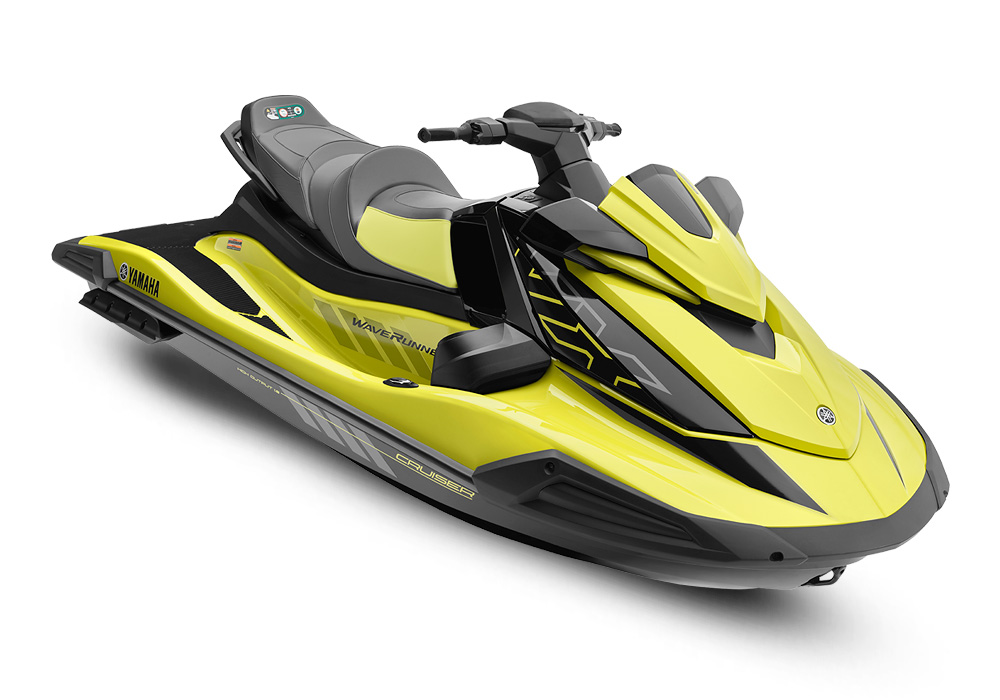
WaveRunner VX Cruiser HO
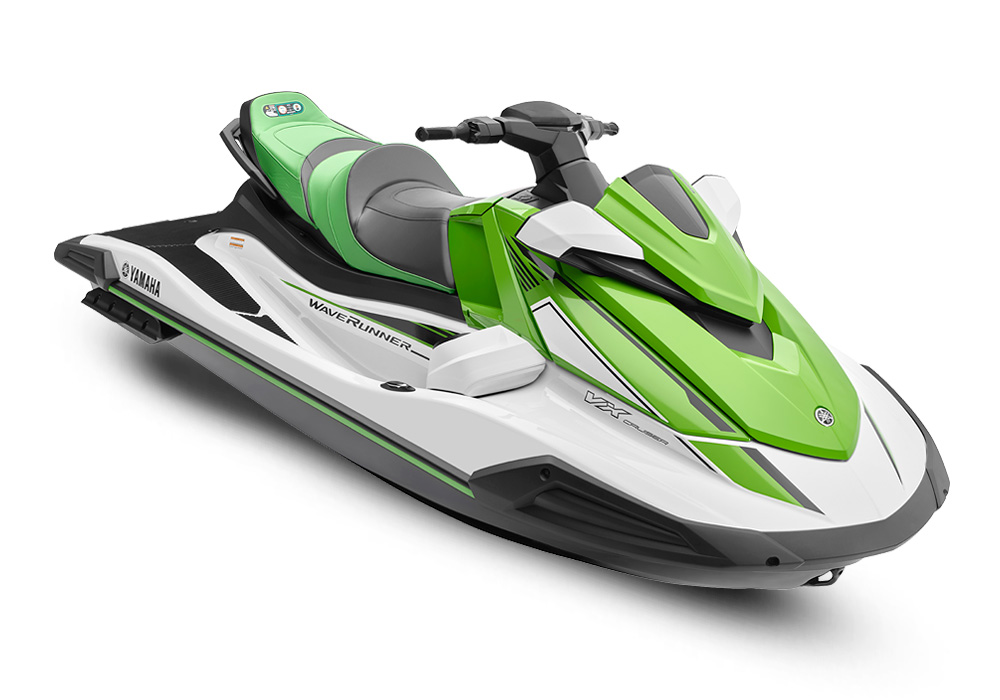
WaveRunner VX Cruiser

WaveRunner VX Deluxe
The VX Series is all-new, delivering improved ergonomics with deeper, wider, self-draining footwells and a new seat profile. This new seat design improves knee grip and overall comfort, especially for smaller size riders.
A standout new feature is Yamaha's 4.3-inch Connext Helm Control with a multi-color LCD. A touchpad control that is mounted next to the steering column provides convenient access to the Connext system's many functions.

WaveRunner GP1800R SVHO
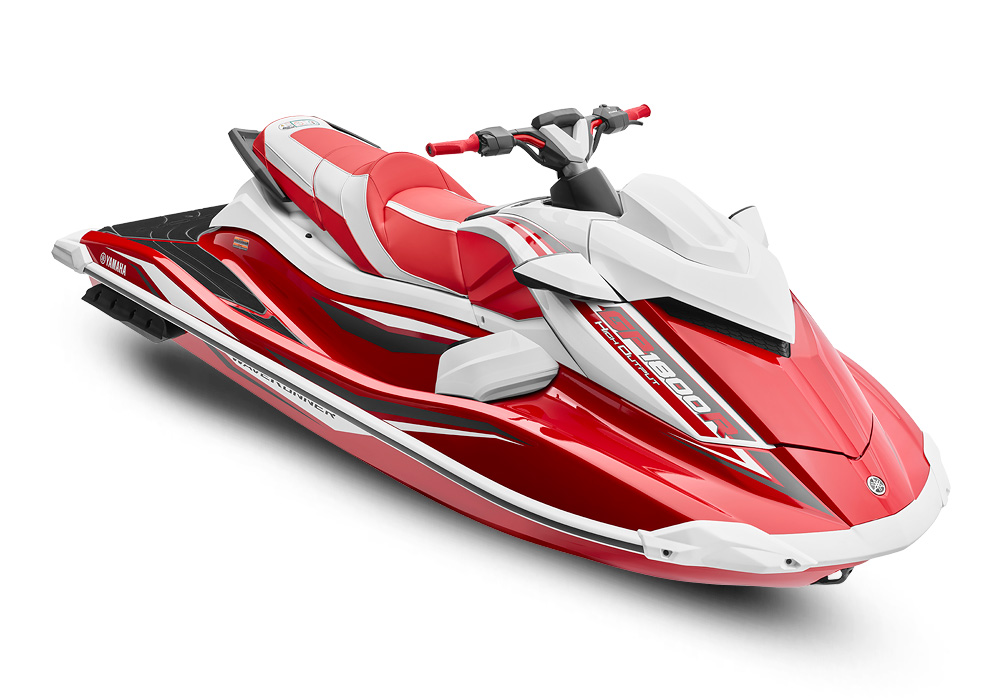
WaveRunner GP1800R HO
For 2021, the Yamaha GP Series is virtually all-new with a new deck design, tilt-adjustable race inspired handlebar design, Connext helm control with 4.3 inch multi-color LED display, the industry’s first Auto Trim function with Cornering Control and Launch Control modes, a new hull liner that moves the craft’s center of gravity for added agility, and a new intake grate and upgraded jet pump for class-leading acceleration. Under the waterline are a redesigned intake grate and upgraded jet pump for better hook up and quicker acceleration. Also new is a redesigned hull liner and repositioning the weight of the fuel tank. The craft's new Center of Gravity enhances the GPs' nimble handling and agility.
2022
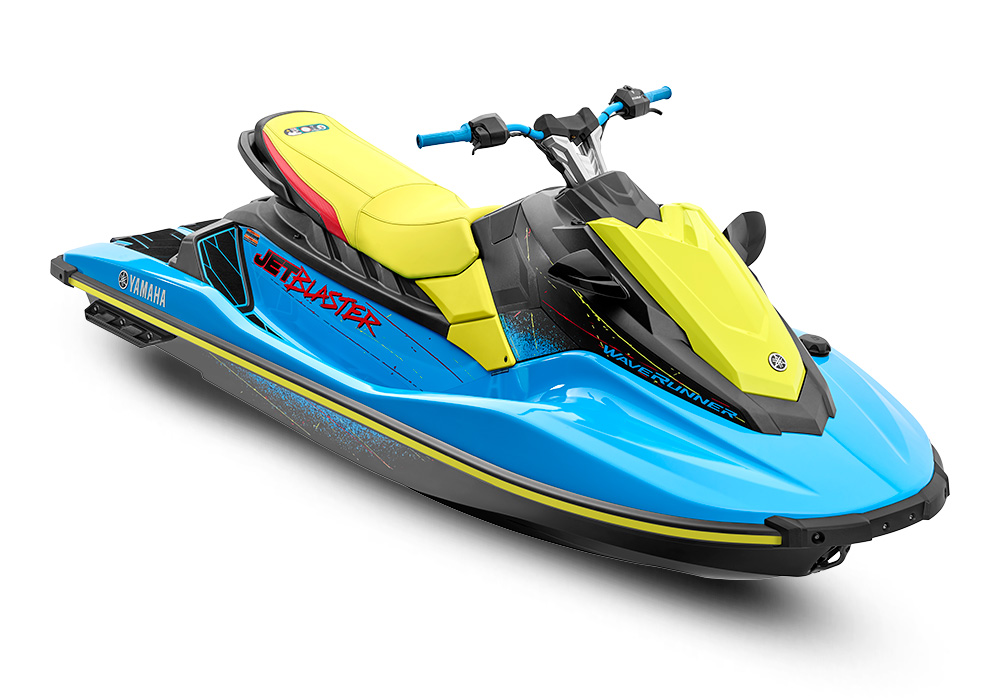
WaveRunner JetBlaster
New to the Yamaha WaveRunner line in 2022 is the fun and exciting JetBlaster that delivers a playful, exciting riding experience like no other sitdown watercraft before.
The three elements that make the JetBlaster so much fun to ride are its raised, lightweight performance handlebars, foot chocks placed where the footwells meet the stern, and a custom-tuned electric trim that allows the rider to tailor the riding characteristics of the watercraft.
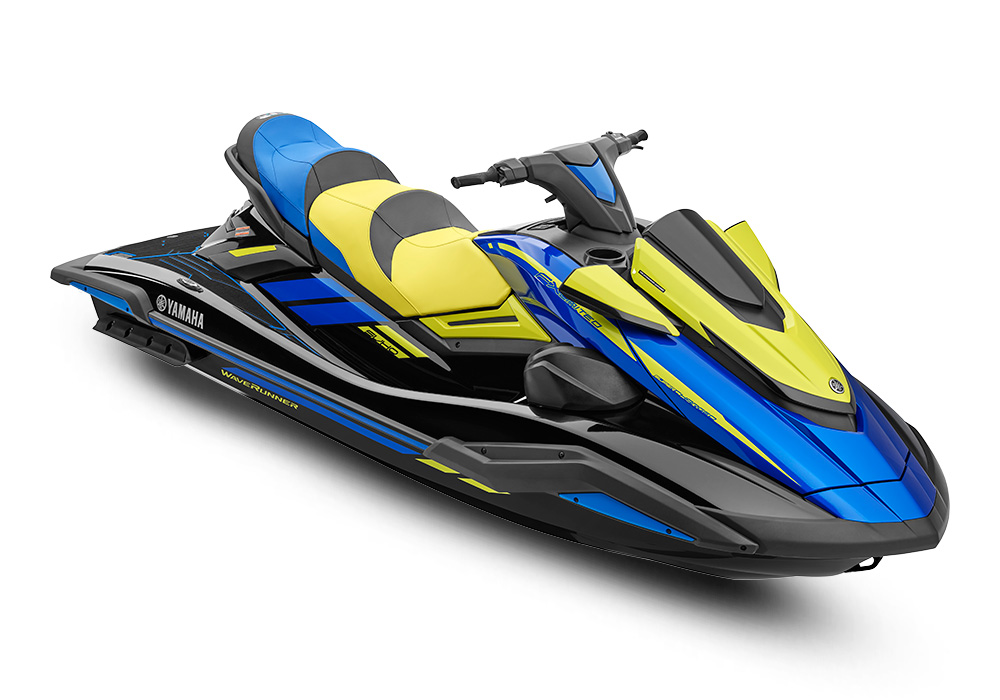
WaveRunner FX Limited SVHO
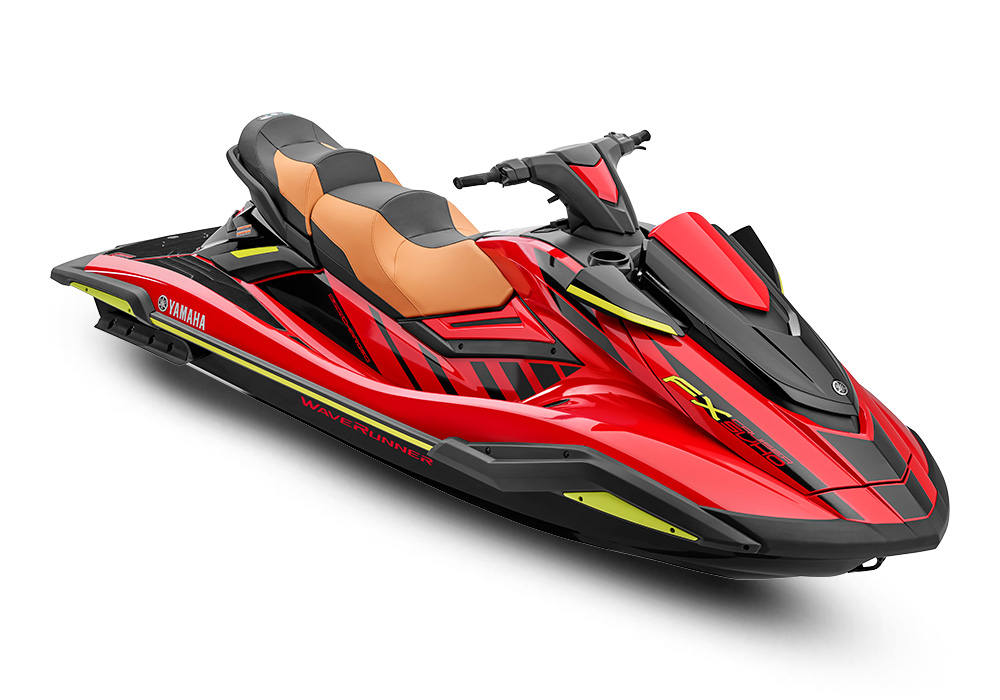
WaveRunner FX Cruiser SVHO
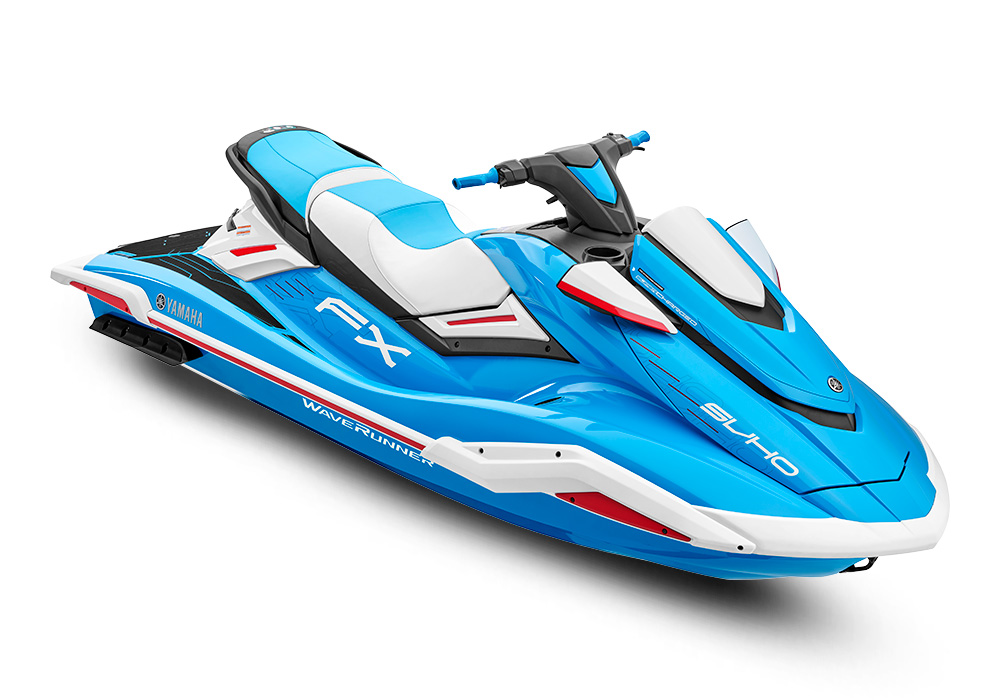
WaveRunner FX SVHO

WaveRunner FX Cruiser HO
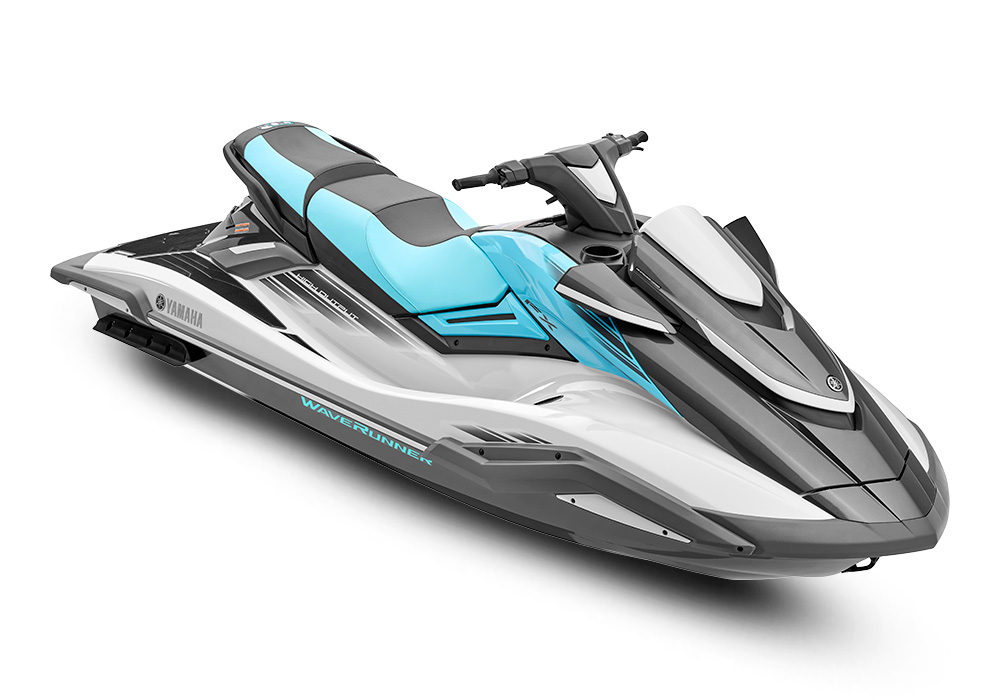
WaveRunner FX HO
The luxury FX series returns with significant enhancements that further distance from its competition. New features include a 7" or 5" full-featured infotainment system with a glass color touchscreen, premium factory-installed audio speakers, and Drive Control with Auto Trim that allows the operator to set and save preferred trim modes for performance or comfort riding.
SVHO models are powered by Yamaha's Supercharged 1.8L Marine Engine, while the HO models are powered by Yamaha's 1.8L normally-aspirated motor. Both engines are renowned for their performance, reliability, and durability.
2024

1.9L HO marine engine
All new 1898cc, four-stroke, four-cylinder, 16-valve High Output Yamaha marine engine replaced the 1812cc High Output motor that powered the previous HO models. This more powerful engine provides quicker and smoother acceleration and a higher top speed. This is achieved through the engine's increased displacement, which is industry largest 1.9L, optimized intake and exhaust paths, and a 10 percent larger throttle body for more power and torque. Yamaha also refreshed and modernized the look of the new HO marine engine with a cross bar concept and an all-new black anodized engine cover and exhaust manifold. For Engine cover, plant-derived cellulose nanofiber (CNF) reinforced resin is adopted, this is the world's first*¹ case of mass-producing parts for vehicles using this material.
*1: Based on Yamaha Motor and Nippon Paper Industries Co., Ltd. research

WaveRunner FX Cruiser HO
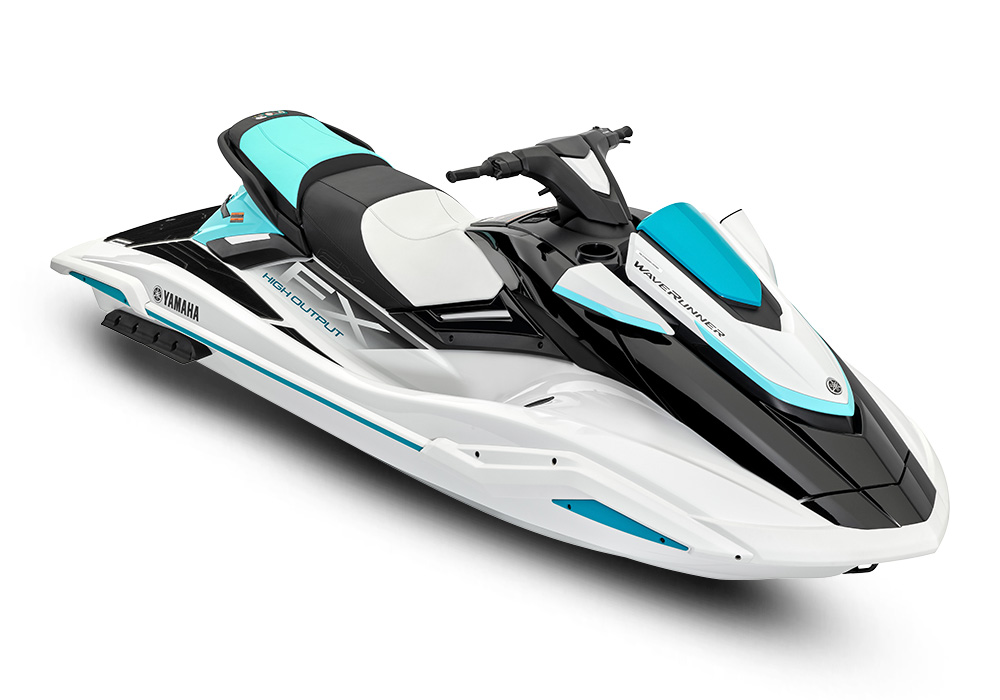
WaveRunner FX HO
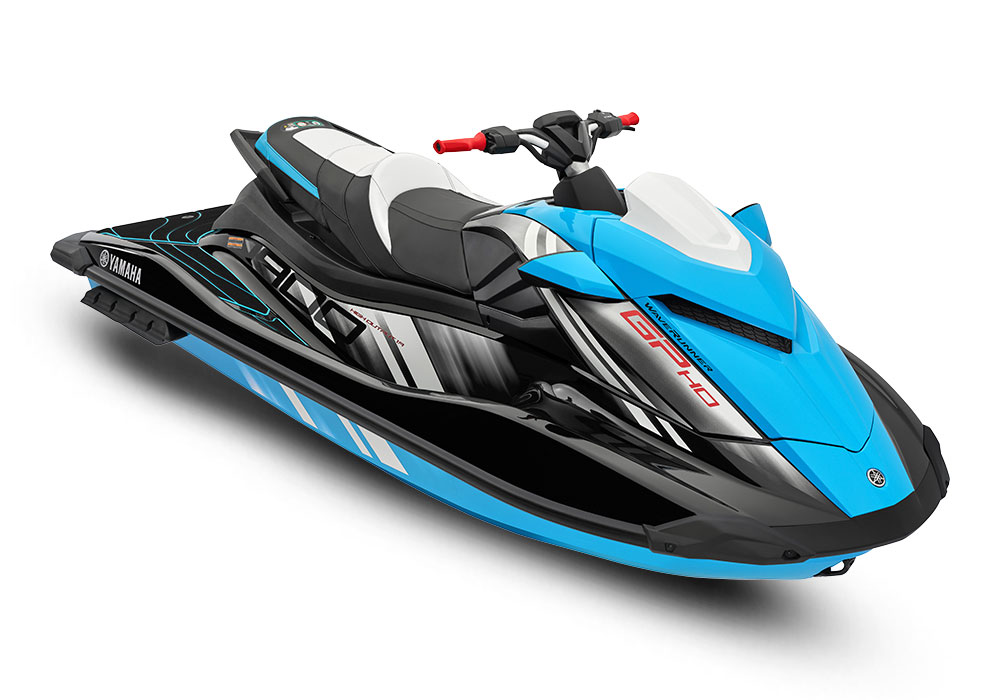
WaveRunner GP HO

WaveRunner VX Cruiser HO
2025
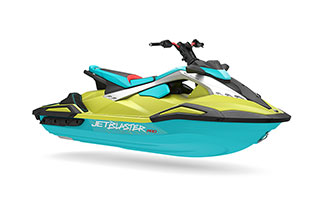
JetBlaster PRO

JetBlaster DLX
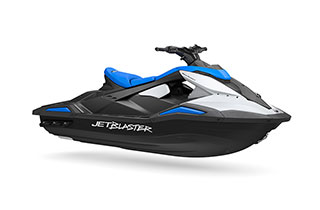
JetBlaster
A whole new JetBlaster series was born!
The JetBlaster series is the most compact-size in the sit-down WaveRunner lineup, and offers an exciting ride.
A standout feature is the reinforced polypropylene deck, a first for the WaveRunner lineup. This material allows for visually dynamic styling and ergonomic design that fiberglass cannot achieve in a compact watercraft.
The JetBlaster and JetBlaster DLX are powered by the TR-1 Yamaha Marine engine, while the JetBlaster PRO is powered by the TR-1 HO Yamaha Marine engine. These lightweight, compact, three-cylinder, four-stroke motors deliver class-leading engine performance and fuel efficiency.
In addition to the playful, sleek and sporty design, the JetBlaster DLX and JetBlaster PRO feature the RiDE system. The JetBlaster PRO also features a 4.3” Connext screen, wide handlebars, and foot chocks for a sportier ride.
